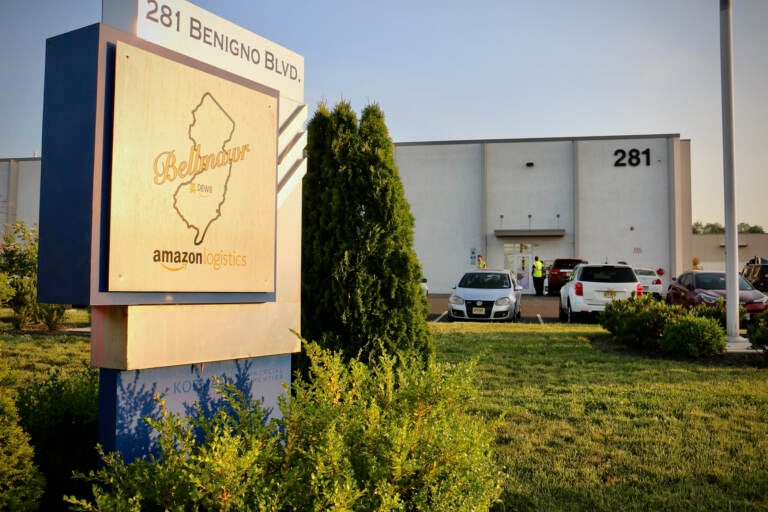Why Amazon’s wish to reduce its footprint in N.J. will be challenging
A slowdown in online shopping prompts Amazon to rethink the space it has, including a facility it’s closing in South Jersey.

Amazon workers participate in a walkout at the company's Bellmawr, N.J., facility. (Emma Lee/WHYY)
From Princeton to Cape May, what do you wonder about South Jersey, its people, and its culture that you want WHYY to investigate? Let us know here.
Amazon is looking to shrink its warehouse footprint in New Jersey and several other states. But it could be challenging to sublet, despite a hot warehouse market in the Garden State.
Various news reports suggest that the retail giant is planning to reduce its space by at least 10 million square feet through either subleasing to other companies or re-negotiating leases they hold with outside warehouse owners.
“Subleasing is a very common real estate practice,” said Amazon spokeswoman Alisa Carroll, in a statement. “It allows us to relieve the financial obligations associated with an existing building that no longer meets our needs. Subleasing is something many established corporations do to help manage their real estate portfolio.”
Part of what’s motivating the reduction in footprint is a $3.8 billion loss in the first three months of this year. It’s the first quarterly loss for Amazon since 2015 blamed, partly, on a slowdown in online shopping that surged during the pandemic.
Within their New Jersey footprint, Amazon has 19 fulfillment and sortation centers and 20 delivery stations.
One of those stations, in Bellmawr, will close at the end of June with those employees transferring to other locations. Paul Blundell, an employee at the South Jersey location, said the closure was announced just more than a month ago.
“There’s a lot of sadness amongst my colleagues,” he said, adding that the warehouse is “one of the most highly tenured warehouses in the region.”
“Most of my co-workers have been with Amazon for two, three or more years; some of them since the building opened in 2018,” he added. “We’ve really grown used to each other and we’ve built relationships with each other.”
Blundell was among 10 employees who staged a walkout at the facility on Wednesday, protesting what they claim are company plans to transfer employees to Amazon locations further away than originally announced.
New Jersey has been experiencing a high demand for warehouses for several years. According to real estate firm Newmark, tenant demand is high amid a limited amount of land and warehouse space in North and Central Jersey. It also said that South Jersey remains the hottest industrial market within the Metro Philadelphia area, with more than 10 million square feet under construction.
Construction of new warehouses has also brought concerns from residents, like in Lawnside and West Windsor. In March, the Mansfield Township Committee voted to ban new warehouse development.
Any plan to sublease Amazon-owned warehouses faces several challenges, according to Walter Nugent, a professor of fire science at New Jersey City University, who also has a finance background.
On the business side, Nugent suggests that if Amazon has been affected by economic conditions which include high inflation and cost concerns like fuel prices, other businesses are being affected as well.
“There has never been a spike in oil prices like this that did not cause a recession,” he said. “Until fuel prices drop, disposable income will be limited for people to spend at Amazon and all other retailers.”
Then, there are the sizes of some of Amazon’s buildings. Their fulfillment center in Robbinsville, for example, stretches 1.2 million square feet, the size of at least 20 football fields.
“[One] challenge is taking a building that’s as large as these Amazon buildings are, to find one tenant,” he added. “I think [it’s] highly unlikely to get one business that would occupy that space.”
Nugent believes that it will likely take several tenants to fill a space that was designed for Amazon, adding the more tenants there are, the more challenges there will be. For example, safety infrastructure including fire sprinklers and emergency exits would need to be reconfigured.
“When you have multiple floors, you need multiple staircases to get out,” he added. “Once you start subdividing who has access to the stairs, you have to design it in a way that multiple tenants could access that same stairwell.”
WHYY is your source for fact-based, in-depth journalism and information. As a nonprofit organization, we rely on financial support from readers like you. Please give today.







